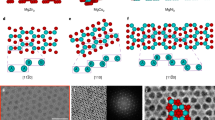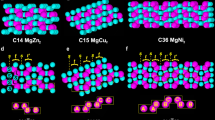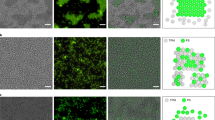Abstract
The colloid known as monodisperse latex1 is an aqueous suspension of a synthetic polymer, the particles of which are ideally spherical and uniform in size (monodisperse). It shows phase transition2 from a disordered to an ordered state, changing its appearance from milky white to iridescent. This is considered as experimental verification of the transition found by computer calculations3,4 of concentrated hard core systems. Thus, monodisperse latex is a reliable model for studying the statistical mechanics of concentrated systems. Furthermore, as the particles are visible5,6 by light microscopy when they are larger than 0.3 µm, we can now directly see what happens during phase transition and related phenomena. Recent work on the structure of gem opals7 offers an important clue to understanding the statistical properties of binary systems. It showed that in some unusual opals two kinds of silica spheres of different size form a superstructure with long period. The structure must have been formed in a stable dispersion of silica spheres7 and then been condensed and dehydrated. It should be possible to produce the structure artificially in some colloids and so provide an excellent model of binary systems. We report here that we have succeeded in producing superstructures in mixtures of two monodisperse polystyrene latexes of different particle size and have observed them microscopically5 in their natural (stably dispersed) state. Several structures were found, including the alloy structures of NaZn13 and CaCu5 types, which belong to the so-called size-factor compounds8.
This is a preview of subscription content, access via your institution
Access options
Subscribe to this journal
Receive 51 print issues and online access
$199.00 per year
only $3.90 per issue
Buy this article
- Purchase on Springer Link
- Instant access to full article PDF
Prices may be subject to local taxes which are calculated during checkout
Similar content being viewed by others
References
Vanderhoff, J. W., Van den Hul, H. J., Tausk, J. M. & Overbeck, J. Th. G. in Clean Surfaces: The Preparation and Characterization for Interface Studies (ed. Goldfinger, G.) 15 (Dekker, New York, 1970).
Hachisu, S., Kobayashi, Y. & Kose, A. J. Colloid Interface Sci. 42, 342 (1973).
Alder, B. J. & Weinright, T. E. Phys. Rev. 127, 359 (1962).
Hoover, W. G., Gray, S. G. & Johnson, K. W. J. Chem. Phys. 55, 1128 (1971).
Kose, A., Ozaki, M., Takano, K., Kobayashi, Y. & Hachisu, S. J. Colloid Interface Sci. 44, 330 (1973).
Okamoto, S. & Hachisu, S. J. Colloid Interface Sci. 62, 172 (1977).
Sanders, J. V. & Murray, M. J. Nature 275, 201 (1978).
Pearson, W. B. Crystal Chemistry and Physics of Metals and Alloys, 73–79 (Wiley-Interscience, London, 1972).
Pearson, W. B. Crystal Chemistry and Physics of Metals and Alloys, 754 (Wiley-Interscience, London, 1972).
Pearson, W. B. Crystal Chemistry and Physics of Metals and Alloys, 643 (Wiley-Interscience, London, 1972).
Author information
Authors and Affiliations
Rights and permissions
About this article
Cite this article
Hachisu, S., Yoshimura, S. Optical demonstration of crystalline superstructures in binary mixtures of latex globules. Nature 283, 188–189 (1980). https://doi.org/10.1038/283188a0
Received:
Accepted:
Issue Date:
DOI: https://doi.org/10.1038/283188a0
This article is cited by
-
The diversity of three-dimensional photonic crystals
Nature Communications (2021)
-
Distorted colloidal crystal of similar-sized aggregates (1.5 μm in diameter) of nano-sized diamond particles (4 nm in diameter)
Colloid and Polymer Science (2013)
-
Multicomponent periodic nanoparticle superlattices
Journal of Nanoparticle Research (2011)
-
Structural diversity in binary nanoparticle superlattices
Nature (2006)
-
Spontaneous ordering of bimodal ensembles of nanoscopic gold clusters
Nature (1998)
Comments
By submitting a comment you agree to abide by our Terms and Community Guidelines. If you find something abusive or that does not comply with our terms or guidelines please flag it as inappropriate.



